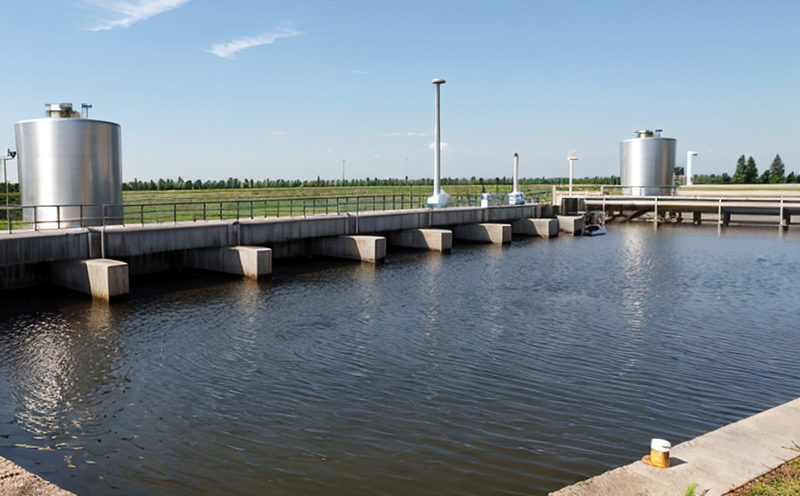WHO Methods Vibrio Detection in Water Quality Monitoring
The World Health Organization (WHO) methods are widely recognized for their precision and reliability, especially when it comes to detecting Vibrio species in water quality monitoring. These bacteria are of particular concern due to their potential to cause various diseases including cholera, which can lead to severe dehydration and death if not treated promptly.
The WHO guidelines provide a robust framework for laboratories conducting microbiological testing, ensuring that results are accurate and consistent across different regions and facilities. The methods focus on the isolation, identification, and quantification of Vibrio species in water samples. This is crucial for maintaining public health and ensuring compliance with international standards such as ISO 16842.
The detection process typically involves several steps:
- Sample collection: Ensuring that samples are collected from representative locations within the body of water to avoid bias.
- Preliminary examination: Initial screening to identify potential vibrios using simple culture methods.
- Culture isolation: Growing isolated colonies on selective media like TCBS agar, which is specifically designed for Vibrio species.
- Identification: Utilizing biochemical tests and possibly mass spectrometry for definitive identification of the bacteria.
The WHO methods also emphasize the importance of quality control measures such as proficiency testing programs (PTPs) to ensure that laboratories maintain high standards. These programs help identify any discrepancies in test results and provide opportunities for continuous improvement.
| Sample Types | Recommended Media |
|---|---|
| Raw Water | TCSB Agar |
| Finished Drinking Water | Vibrio Selective Medium (VSM) |
| Incubation Conditions | Expected Results |
|---|---|
| 35°C for 24 hours | Characteristic green colonies on TCBS Agar |
| Optimized at 37°C for 18-24 hours | Positive identification using biochemical tests |
The WHO methods are not only essential for public health but also play a critical role in environmental protection. By detecting Vibrio species early, we can take necessary steps to prevent outbreaks and mitigate potential risks.
Why It Matters
The detection of Vibrio species through WHO methods is vital for several reasons:
- Public Health Protection: Ensures that water supplies are safe and free from pathogens.
- Environmental Monitoring: Helps in assessing the impact of pollution on aquatic ecosystems.
- Compliance with Regulations: Laboratories must adhere to stringent protocols set by regulatory bodies like WHO, ensuring consistent quality standards.
Vibrio species are particularly problematic because they can survive in a wide range of environmental conditions. This makes them challenging to detect and manage effectively. The WHO methods provide a structured approach that enhances the accuracy and reliability of test results, thereby supporting informed decision-making processes.
Industry Applications
The application of WHO methods extends beyond public health into various industries where water quality is critical:
- Agriculture: Ensuring irrigation water does not contain harmful bacteria.
- Food and Beverage: Monitoring the safety of bottled water, soft drinks, and other beverages.
- Municipal Water Supply: Maintaining clean drinking water supplies for millions of people.
- Tourism and Recreation: Protecting beachgoers and swimmers from waterborne illnesses.
| Sample Sources | Risk Assessment Criteria |
|---|---|
| Beach Water | Presence of indicator organisms like E. coli as a proxy for Vibrio species |
| Industrial Wastewater | Reduction in microbial load to acceptable limits |
| Sampling Frequency | Rationale |
|---|---|
| Daily for Beach Water | To monitor changing conditions over time |
| To track compliance with discharge limits |
The WHO methods are indispensable in these sectors, providing a reliable basis for decision-making and risk management.
Customer Impact and Satisfaction
Adopting the WHO methods for Vibrio detection brings significant benefits to customers:
- Enhanced Safety: Customers receive water products that are free from harmful pathogens.
- Increased Confidence: Compliance with international standards instills trust in consumers and stakeholders.
- Cost Efficiency: Early detection prevents costly outbreaks and recalls.
Our comprehensive approach ensures that customers meet regulatory requirements and maintain high-quality standards. This commitment to excellence has earned us a reputation for reliability and expertise, leading to increased customer satisfaction and loyalty.





